Discover the complete eCommerce CRO (Conversion Rate Optimization) audit guide packed with 24 proven strategies to boost conversions, enhance user experience, and maximize sales. Learn step-by-step methods to identify issues, optimize your store, and turn more visitors into loyal customers.
Why eCommerce Conversion Rate Optimization Audits Drive Revenue Growth
When your online store attracts 15,000 monthly visitors with a standard 2.2% conversion rate, even a modest 1% improvement translates to 150 additional monthly conversions. This powerful impact demonstrates why systematic eCommerce conversion rate optimization (CRO) audits are essential for sustainable business growth.
Strategic conversion rate audits enable targeted website optimization, delivering improved customer retention rates and substantially enhanced profit margins. The comprehensive approach outlined in this guide provides actionable insights for maximizing your existing traffic potential.
Optimal Frequency for eCommerce Store Performance Audits
Successful eCommerce conversion optimization requires consistent monitoring and periodic deep-dive analysis. Think of these audits as essential health checks for your digital storefront.
Pro Tip: Always approach your audit from a customer perspective rather than solely a business owner’s viewpoint.
Recommended Audit Schedule:
- Continuous Monitoring: Address issues immediately as they arise
- Quarterly Deep Dives: Comprehensive performance, security, and financial analysis every three months
- Annual Comprehensive Reviews: Thorough year-end evaluation covering all conversion touchpoints
This structured approach ensures early problem detection while maintaining optimal user experience and conversion performance.
Comprehensive CRO Audit Framework
This detailed conversion rate optimization checklist covers six critical areas:
- Homepage Conversion Optimization
- Product Listing Page Enhancement
- Product Page Optimization
- Checkout Process Streamlining
- SEO & Content Strategy
- Website UX & Technical Performance
(A) Homepage Conversion Rate Optimization Checklist
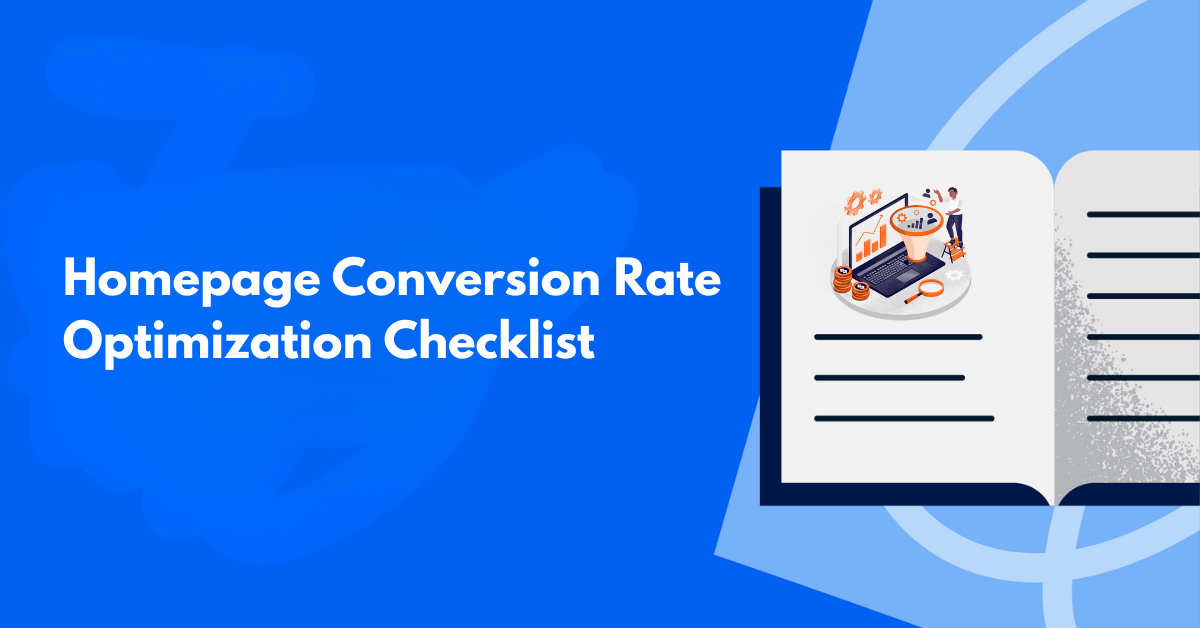
Your homepage serves as the primary conversion gateway, making its optimization crucial for overall store performance.
1. Strategic Navigation Design for Higher Conversions
Research indicates that optimized eCommerce navigation can boost conversion rates by 18.5%, making this a high-priority optimization area.
Navigation Optimization Strategies:
- ✓ Minimize core category count to reduce cognitive overload
- ✓ Implement advanced faceted navigation with filters for price, size, color, and brand attributes
- ✓ Leverage user feedback and behavioral analytics to identify navigation pain points
Critical Navigation Assessment Questions:
- Can users reach any product within 2 navigation steps from dropdown menus?
- Does your navigation provide clear visual indicators for bestselling and trending products?
2. Search Functionality Optimization
Poor search experiences cost eCommerce businesses approximately $300 billion annually. Conversely, search users convert 2-6 times better than non-search visitors.
Search Bar Enhancement Tactics:
- ✓ Display relevant autocomplete suggestions with popular search terms and product categories
- ✓ Include helpful placeholder text like “search by category, brand, or specific need”
Search Functionality Evaluation Criteria:
- Is the search bar prominently positioned, especially on mobile devices?
- Does your search handle non-product queries like “returns” or “order tracking”?
3. Homepage Visual Hierarchy Optimization
With 34% of consumers shopping online weekly, your homepage must balance familiar UX patterns with unique value propositions.
Above-the-Fold Optimization Elements:
- ✓ Communicate clear value propositions immediately upon arrival
- ✓ Feature prominent product showcases, promotions, and special offers
- ✓ Include compelling call-to-action buttons like “Shop Now,” “Discover More,” or “Get Started”
Below-the-Fold Enhancement Strategies:
- ✓ Utilize urgency-creating elements like countdown timers and limited-time badges
- ✓ Display trust indicators including security measures, return policies, and guarantees
- ✓ Incorporate relevant customer review snippets alongside product recommendations
Visual Hierarchy Assessment Questions:
- Does your header bar highlight free shipping or other crucial announcements?
- Do visual elements guide natural attention flow from top-to-bottom, left-to-right?
- Are trust elements strategically placed at decision-making touchpoints?
4. Homepage User Experience (UX) Optimization
Since 88% of online consumers avoid returning after poor experiences, and homepage traffic comprises nearly 50% of major retailer visits, UX optimization is critical.
Homepage UX Enhancement Framework:
- ✓ Answer the three fundamental questions: “What is this?” → “Why should I care?” → “What should I do next?”
- ✓ Eliminate conversion-blocking distractions while encouraging product exploration
- ✓ Balance brand information, product discovery, and trust elements for cohesive first impressions
UX Performance Evaluation Questions:
- Do visitors need to scroll back up to access navigation elements?
- Is the shopping initiation path compelling enough to encourage continued browsing?
(B) Product Listing Page (PLP) CRO Audit Checklist
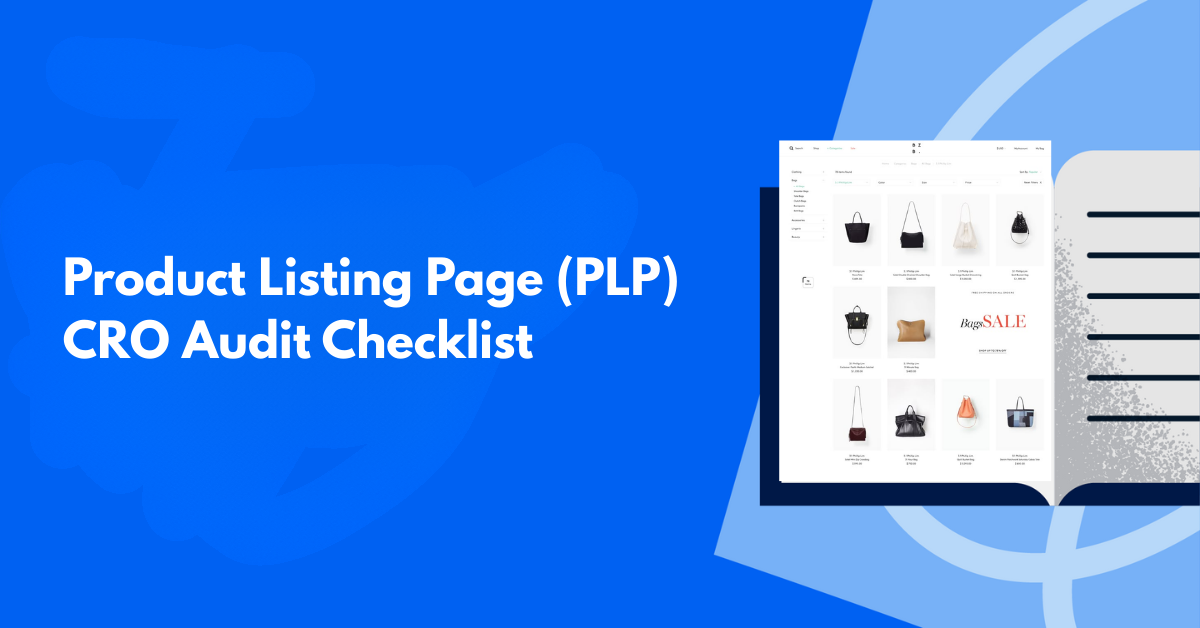
Product listing pages serve as virtual doorways to eventual sales, making their optimization essential for conversion success.
5. PLP Navigation Enhancement
Effective product listing page design guides users seamlessly through their purchasing journey.
PLP Navigation Optimization Strategies:
- ✓ Provide comprehensive filtering and sorting options for refined product discovery
- ✓ Make essential filters easily accessible to high-intent buyers and searchers
- ✓ Optimize product cards for both quick scanners and detailed explorers
Navigation Performance Assessment Questions:
- Are sorting functions like “Best Sellers,” “Price: Low to High,” and “Newest” clearly labeled?
- Do visual cues highlight promotions, stock levels, and shipping speed?
6. PLP Design & User Experience
Poor user experience leads to immediate bounce rates and negative word-of-mouth marketing.
PLP Design Optimization Checklist:
- ✓ Ensure high-resolution product thumbnails with multiple viewing angles
- ✓ Maintain consistent product title and description formatting for readability
- ✓ Display concise product snapshots to minimize back-and-forth navigation
Design UX Evaluation Criteria:
- Is the default products-per-page count optimized for loading speed and scroll fatigue?
- How effectively do urgency indicators and incentives stand out among multiple product options?
- Are visual labels like “bestseller,” “trending,” or “low stock” prominently displayed?
7. Call-to-Action (CTA) Button Optimization
PLP CTAs compete not only with each other but also with multiple product cards, requiring strategic optimization.
CTA Enhancement Strategies:
- ✓ Make “Quick View” buttons accessible without hover requirements, using contrasting colors
- ✓ Maintain consistent CTA text across all product listings for user familiarity
- ✓ Provide immediate feedback when CTAs are clicked to guide next actions
CTA Performance Questions:
- Is CTA copy action-oriented and specific (e.g., “Add to Cart” vs. generic “Click Here”)?
- Are buttons disabled or show loading feedback to prevent accidental double-clicks?
8. Strategic Pricing Cue Implementation
Smart pricing strategies effectively attract attention and encourage conversions on product listing pages.
Pricing Optimization Tactics:
- ✓ Display original prices with strikethrough formatting alongside discounted prices
- ✓ Implement price range filters for specific budget targeting
- ✓ Show “X to Y” pricing ranges for variants to encourage product page visits
Pricing Strategy Assessment Questions:
- Do bulk or bundle options clearly communicate per-unit savings?
- Are value propositions like “Best Seller” or “Save 15%” visible near pricing?
(C) Product Page Conversion Optimization Checklist
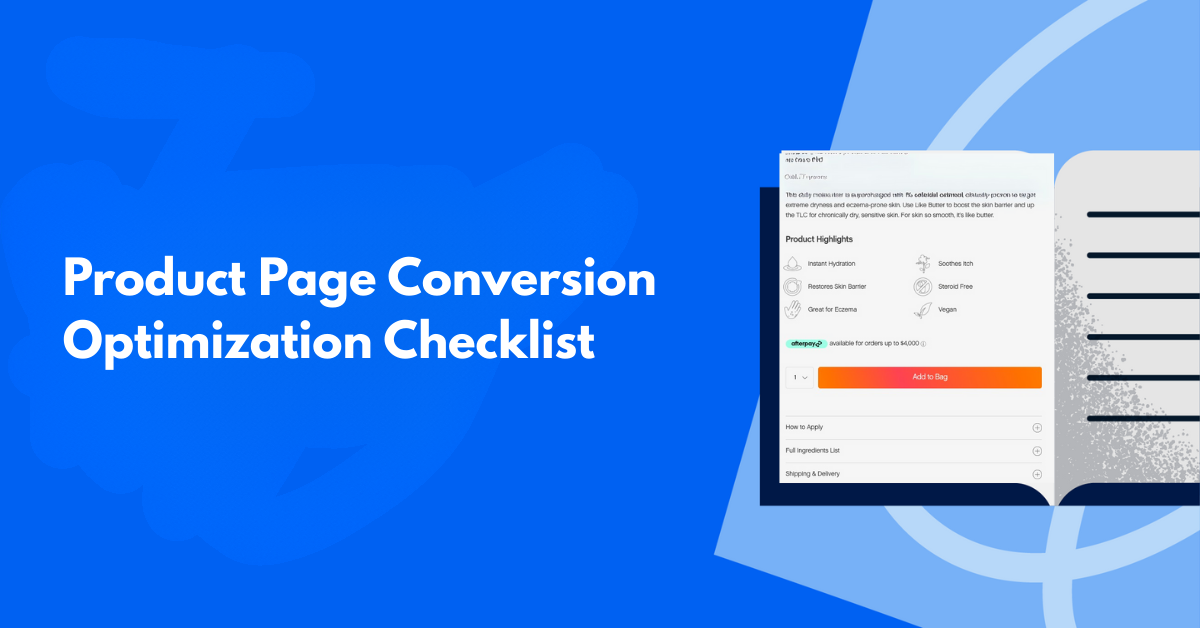
Product pages rank as the second most-visited pages on eCommerce sites, making their optimization crucial for conversion success.
9. Product Page Copywriting Excellence
Since 87% of customers consider product content the most important purchase decision factor, compelling copy is essential.
Copy Optimization Strategies:
- ✓ Use persuasive language highlighting product benefits over features
- ✓ Create concise, informative descriptions emphasizing key product attributes
- ✓ Include high-quality multimedia content showing products from multiple angles
Copywriting Assessment Questions:
- Are you using microcopy and icons to highlight unique product features?
- Is shipping, tax, and subscription information clearly communicated?
10. Product Page User Experience Enhancement
Excellent products with poor UX can fail to convert despite perfect customer fit.
Product Page UX Optimization Framework:
- ✓ Add interactive elements like image sliders, carousels, and expandable sections
- ✓ Use large fonts and contrasting colors to make pricing stand out
- ✓ Test CTA button placement, sizing, coloring, and wording variations
- ✓ Implement sticky CTA buttons for easy access during scrolling
- ✓ Enable geolocation for automatic pricing and shipping adjustments
- ✓ Highlight connected categories for improved navigation
UX Performance Evaluation Questions:
- Are key benefits, features, and materials mentioned near pricing information?
- Is free shipping messaging tied to pricing thresholds (“Spend $20 more for free shipping”)?
- Are FAQs, guarantees, and shipping details accessible without page navigation?
11. Customer Retention Optimization
Repeat customers often convert 2-3 times higher than new visitors, frequently returning through product pages.
Retention Enhancement Strategies:
- ✓ Analyze subscription plan performance and repeat customer encouragement
- ✓ Implement quick reordering functionality for previously purchased items
- ✓ Optimize review sections to increase high-intent customer engagement
Customer Retention Assessment Questions:
- Are discount offers effectively converting into actual sales?
- Does live chat support guide shoppers through the complete buying process?
12. Trust & Credibility Reinforcement
Strategic trust building on product pages strengthens purchase decisions and reduces abandonment.
Credibility Enhancement Tactics:
- ✓ Incorporate user-generated content, social media shares, and influencer endorsements
- ✓ Increase transparency in product descriptions and additional information
- ✓ Optimize live chat functionality for immediate helpfulness and accessibility
Trust Building Assessment Questions:
- Are industry partnerships and certifications prominently displayed for validation?
- How prominently are security indicators like payment methods and money-back guarantees positioned?
(D) Checkout Process Optimization Checklist
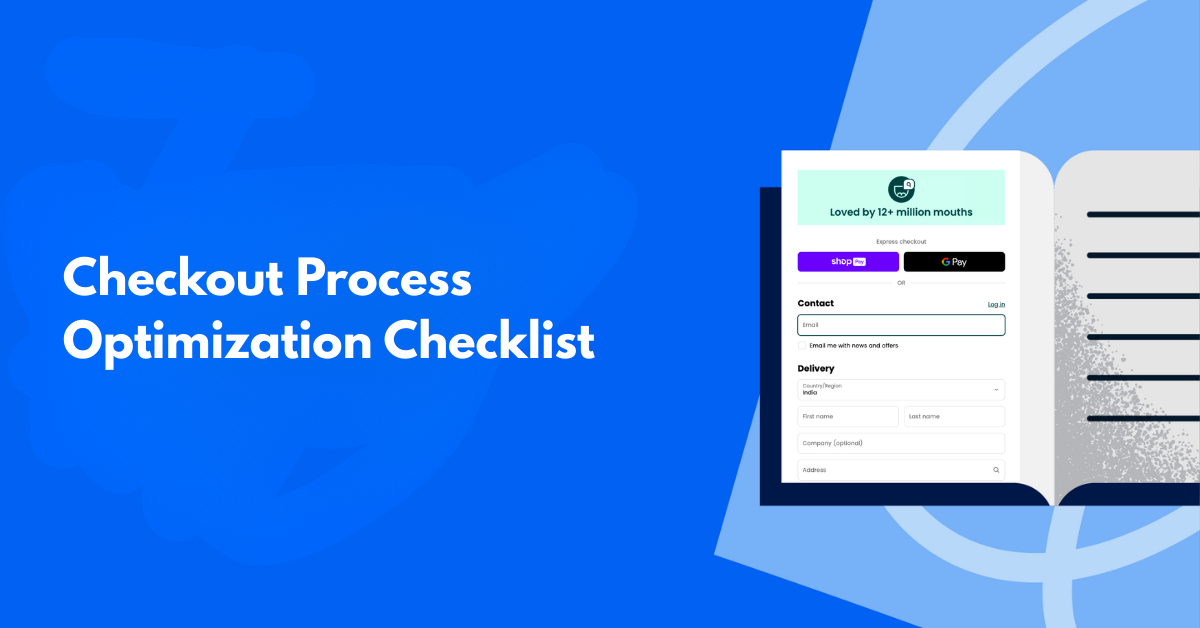
With checkout abandonment rates fluctuating between 60-80% over the past decade, checkout optimization presents significant conversion opportunities.
13. Checkout Navigation Streamlining
Once customers reach checkout, avoiding overwhelming complexity becomes paramount.
Checkout Navigation Enhancement Strategies:
- ✓ Use familiar form field and button conventions to minimize confusion
- ✓ Implement single-page checkout layouts to reduce last-minute hesitation
- ✓ Feature social login options for expedited checkout processes
Navigation Flow Assessment Questions:
- Is the checkout process linear enough to prevent second-guessing next steps?
- Can customers easily edit shipping details or payment methods without restarting?
14. Checkout User Experience Optimization
While checkout navigation focuses on customer movement, checkout UX emphasizes emotional experience.
Checkout UX Enhancement Framework:
- ✓ Ensure form fields and buttons are easily accessible on mobile devices
- ✓ Provide multiple shipping options including standard, expedited, and same-day delivery
- ✓ Allow product selection/deselection with strategic warning messages
UX Experience Evaluation Questions:
- Are error messages helpful, visible, and positioned near problematic fields?
- Can shoppers easily move items to wishlists instead of removing them?
15. Checkout Security Enhancement
Account takeovers are common in eCommerce, requiring robust security measures for customer confidence.
Security Optimization Strategies:
- ✓ Include CAPTCHA verification for high-risk transactions without creating friction
- ✓ Clearly outline total order costs including taxes, shipping, and additional charges
- ✓ Display trust badges, security seals, and SSL certificates prominently
Security Assessment Questions:
- Do you have customer payment verification against government databases for fraud prevention?
- Have you considered 3D Secure authentication like Verified by Visa for additional verification?
16. Post-Purchase Experience Enhancement
Excellent post-purchase experiences drive customer satisfaction, loyalty, and repeat purchases.
Post-Purchase Optimization Strategies:
- ✓ Optimize order confirmation pages with clear purchase details and delivery information
- ✓ Provide comprehensive shipping updates and tracking information
- ✓ Send thank-you emails with next-purchase discounts and product care instructions
Post-Purchase Assessment Questions:
- Can customers easily initiate returns, print labels, and track return status?
- Are you incentivizing reviews and user-generated content in follow-up communications?
(E) eCommerce SEO Audit Checklist
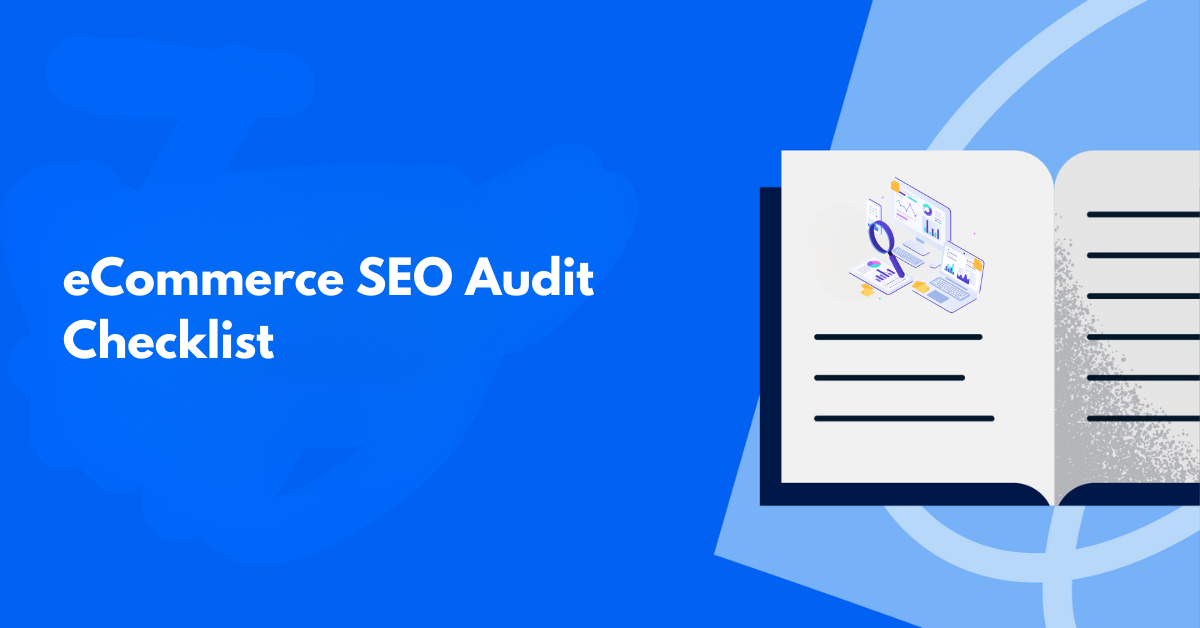
With 37.5% of eCommerce traffic originating from search engines, SEO optimization is crucial for visibility and conversions.
17. On-Page SEO Optimization
Strategic on-page SEO helps individual pages rank higher while targeting specific customer profiles.
Link Optimization Strategies:
- ✓ Analyze backlink profiles for high-quality inbound links and building opportunities
- ✓ Use clean, descriptive URLs with relevant keywords and clear structure
Product Copy SEO Enhancement:
- ✓ Craft keyword-rich titles with relevant terms near the beginning
- ✓ Optimize title tags, meta descriptions, and header tags for target keywords
Image SEO Optimization:
- ✓ Use descriptive filenames like “blue-widget-product.jpg”
- ✓ Add keyword-rich alt text while accurately describing image content
On-Page SEO Assessment Questions:
- Do H2-H6 tags create logical content hierarchy for effective page scanning?
- Is content depth appropriate for the user’s buying journey stage?
- Have you implemented relevant schema markup for your content type?
18. Technical SEO Enhancement
Technical SEO optimization improves search engine visibility and overall performance.
Technical SEO Audit Strategies:
- ✓ Prioritize slow-loading page optimization focusing on LCP, FID, and CLS scores
- ✓ Evaluate mobile-first performance including touch-friendly navigation and readable text
- ✓ Review robots.txt files, XML sitemaps, and internal linking structures
- ✓ Identify and fix redirect chains or loops in internal architecture
- ✓ Eliminate duplicate or near-duplicate content across your store
Technical SEO Assessment Questions:
- Are page load speeds consistently 2-3 seconds across all devices?
- Are important pages being properly crawled and indexed?
- Are secure HTTPS protocols consistently enforced without mixed content?
19. Content SEO Strategy
Strategic content SEO attracts organic traffic and drives conversions by targeting high-intent shoppers.
Content SEO Enhancement Framework:
- ✓ Audit existing content for relevance, freshness, and keyword alignment
- ✓ Identify blog content opportunities addressing customer needs and long-tail keywords
- ✓ Encourage customer reviews, ratings, and comments for keyword-rich user-generated content
- ✓ Include comprehensive FAQ sections addressing common customer concerns
Content SEO Evaluation Questions:
- Is it clear which pages target different funnel stages (ToFu, MoFu, BoFu)?
- Does content show declining impressions and click-through rates?
- Are there missed opportunities for guiding readers deeper into the conversion funnel?
20. Local SEO Optimization
Local SEO attracts highly qualified leads who are more likely to convert into customers.
Local SEO Enhancement Strategies:
- ✓ Optimize Google My Business profiles with accurate NAP information, URLs, hours, and categories
- ✓ Target keywords with local intent including city names, neighborhoods, and location modifiers
- ✓ Create dedicated location-specific landing pages with relevant keywords and content
Local SEO Assessment Questions:
- Is your business category and description clear and keyword-optimized?
- Are you listed on major local directories like Yelp, Bing Places, and Apple Maps?
- Do customer reviews mention location-specific services or experiences?
(F) Website & UX Conversion Rate Optimization Checklist
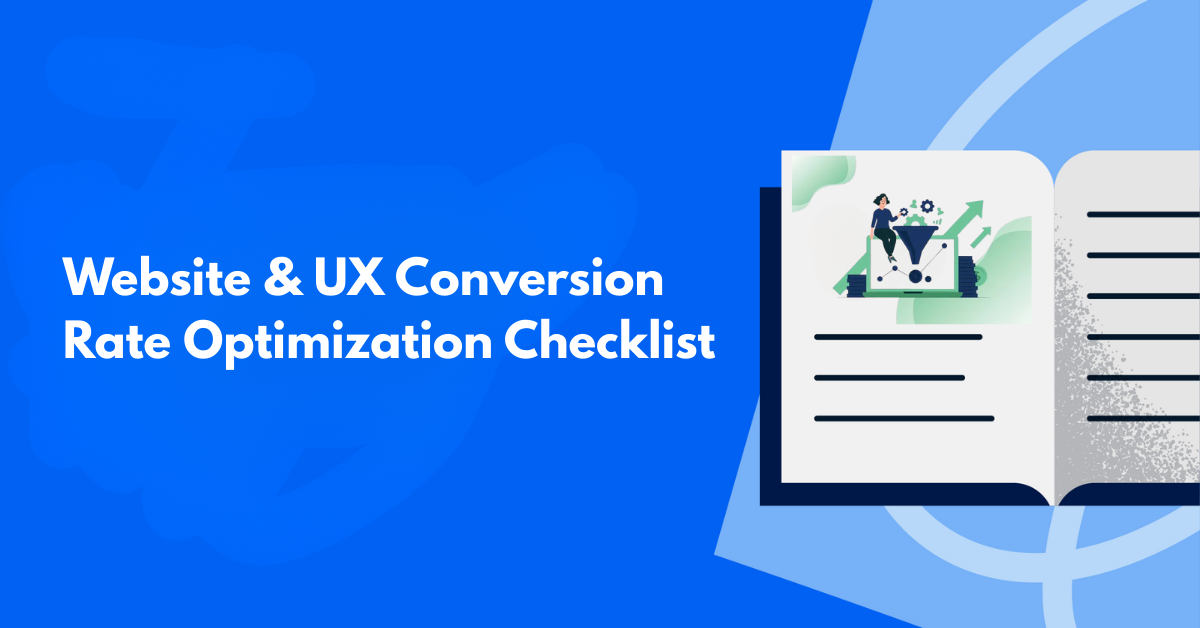
Comprehensive website and user experience optimization ensures optimal performance across all touchpoints.
21. eCommerce Website Page Load Time Optimization
Websites loading within 1 second achieve 3x higher conversion rates, while 40% of visitors abandon sites taking longer than 3 seconds to load.
Page Load Time Enhancement Strategies:
- ✓ Analyze load times using Google PageSpeed Insights and GTmetrix, prioritizing slowest pages
- ✓ Review third-party script performance impact including analytics, social widgets, and marketing tags
- ✓ Reduce HTTP requests by combining CSS and JavaScript files
- ✓ Optimize above-the-fold content prioritizing critical resources like text, images, and CSS
Load Time Assessment Questions:
- Are third-party applications slowing down your website performance?
- How does your page load speed compare to competitors and industry benchmarks?
- What are average load times across desktop, mobile, and other devices?
22. Mobile Responsiveness Optimization
Mobile commerce revenue is projected to reach $2 trillion by 2024, with 76% of shoppers purchasing via smartphones and 82% making at least one mobile purchase in the last 6 months.
Mobile Responsiveness Enhancement Framework:
- ✓ Assess overall mobile design including layout, navigation, and visual elements
- ✓ Ensure interactive elements are appropriately sized and spaced for easy tapping
- ✓ Implement collapsible or hamburger menus for streamlined mobile navigation
- ✓ Optimize multimedia content for mobile playback and browser compatibility
Mobile Responsiveness Evaluation Questions:
- Can shoppers complete key actions without extra effort compared to desktop?
- Does content hierarchy enable seamless customer journey progression?
- Are pop-ups appropriately timed and not overwhelming mobile users?
23. Website Image Optimization
75% of online shoppers rely on product photos for purchasing decisions, while 22% of returns result from products looking better online than in reality.
Image Optimization Enhancement Strategies:
- ✓ Use modern formats like WebP for improved compression and faster loading
- ✓ Implement lazy loading techniques for images not immediately visible
- ✓ Use descriptive, keyword-rich filenames separated by hyphens or underscores
Image Optimization Assessment Questions:
- Are multiple product images, angles, and views provided for comprehensive understanding?
- Do image attributes follow WCAG accessibility guidelines for alt text and descriptions?
24. eCommerce Website Security Enhancement
88% of consumers base personal information sharing decisions on brand trust levels, making security crucial for eCommerce success.
Security Enhancement Strategies:
- ✓ Encrypt sensitive data transmission including login credentials, payment information, and personal details
- ✓ Evaluate payment processing system security ensuring PCI DSS compliance
- ✓ Use automated scanning tools and manual testing for vulnerability identification
Security Assessment Questions:
- Are trust signals prominently displayed on high-intent pages like product and checkout pages?
- Are payment options easily recognizable to most consumers?
- Are return, refund, and privacy policies easily accessible to customers?
eCommerce CRO Audit: Frequently Asked Questions
1. What is CRO in eCommerce?
Conversion Rate Optimization (CRO) in eCommerce refers to the systematic process of increasing the percentage of website visitors who complete desired actions such as making purchases, adding products to carts, subscribing to newsletters, or clicking specific call-to-action buttons.
Unlike traffic acquisition through paid advertising or SEO, eCommerce CRO focuses on maximizing existing website traffic potential by identifying and removing obstacles in the customer journey. This approach utilizes data-driven decisions, user behavior analysis, and continuous testing.
In competitive online retail environments, conversion rate optimization is essential for boosting revenue, improving ROI, and enhancing customer experience without increasing customer acquisition costs.
2. What is an eCommerce Conversion Rate Optimization Checklist?
An eCommerce Conversion Rate Optimization checklist is a comprehensive guide outlining essential steps and best practices for enhancing online store conversion capabilities. This structured approach serves as a roadmap for auditing and improving every customer journey stage, from homepage to checkout completion.
A well-structured CRO checklist typically includes:
- User interface and user experience (UI/UX) audits
- Product page optimization strategies
- Mobile responsiveness enhancements
- Page load speed improvements
- Trust signal implementation
- A/B testing frameworks
- Conversion funnel performance analysis
Implementing a systematic eCommerce CRO checklist ensures optimization efforts remain consistent, measurable, and aligned with business objectives while identifying both quick wins and long-term improvement opportunities.
3. What are the Essential Elements of an eCommerce CRO Checklist?
A high-performing eCommerce CRO checklist encompasses multiple elements that collectively improve customer journeys, reduce bounce rates, and increase conversion rates:
→ Homepage Optimization
- Clear value proposition communication
- Intuitive navigation and search functionality
- Featured products and bestselling categories
→ Product Page Enhancements
- High-resolution product imagery with zoom capabilities
- Compelling, benefit-driven product descriptions
- Clear pricing, availability, and delivery information
- Prominent call-to-action buttons
→ Trust-Building Features
- Customer reviews and ratings display
- Money-back guarantees
- Trust badges for SSL and secure payments
→ Checkout Process Simplification
- Reduced form field requirements
- Guest checkout options
- Progress indicators
→ Mobile Optimization
- Responsive design across all devices
- Thumb-friendly user interface
- Mobile payment integrations
→ Page Speed Optimization
- Fast loading times on desktop and mobile
- Image compression and minimal script usage
→ Behavioral Analytics
- Heatmaps, scroll maps, and user session recordings
- Conversion funnel analysis for drop-off identification
→ A/B Testing Strategy
- Regular testing of headlines, product images, CTAs, layouts, and offers
- Data-backed decision making based on test results
Each checklist item contributes to improved eCommerce store conversion rate optimization, creating more user-friendly experiences that effectively convert traffic into sales.
4. How does A/B Testing help eCommerce Stores?
A/B testing, also known as split testing, is a powerful eCommerce conversion rate optimization tool that compares two webpage versions, product listings, or marketing elements to determine which drives more conversions. Rather than relying on assumptions, A/B testing uses real user data for validation.
A/B Testing Benefits for eCommerce:
- Improved Conversion Rates: Test variations of CTAs, headlines, product images, and pricing layouts to identify the most persuasive versions.
- Data-Driven Decision Making: Gain customer preference and behavior insights based on actual interaction data rather than guesswork.
- Reduced Cart Abandonment: Test different checkout flows, payment options, and trust signals to identify friction-free paths.
- Higher Marketing ROI: Optimize landing pages and product pages receiving paid traffic, ensuring maximum value per visitor.
- Continuous Growth: A/B testing supports constant iteration and performance improvement culture, crucial for long-term eCommerce success.
When implemented strategically and regularly, A/B testing becomes an integral part of your CRO checklist, directly boosting eCommerce store revenue and customer satisfaction.
Get Your FREE Conversion Rate Optimization Audit
Did you know that 98% of eCommerce website visitors leave without making a purchase?
The primary reason: user experience issues creating friction for potential customers. This is exactly the problem our conversion optimization experts solve.
We’ve helped over 500 eCommerce stores across the United States improve their user experience and double their conversion rates through systematic optimization strategies.
How Can We Help Your Store?
Our conversion rate optimization specialists can audit your website to identify UX issues and develop A/B testing strategies that improve conversions.
Ready to transform your eCommerce performance?
Contact us today for your complimentary conversion rate optimization audit and discover how to maximize your


